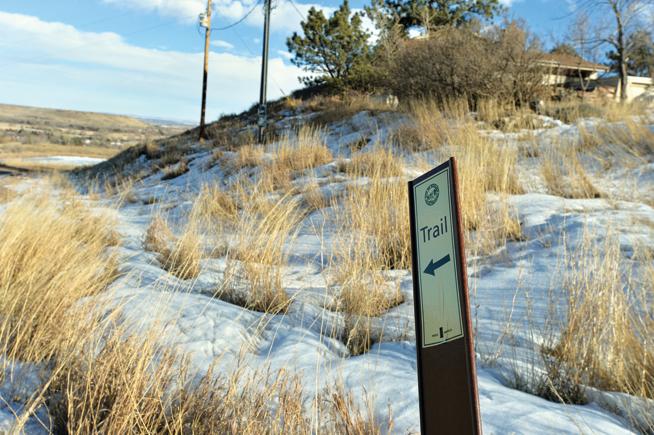Nod from Boulder board blazes way for western connector trail to Joder Ranch
By Alex Burness
Camera Staff Writer
 Boulder’s Open Space Board of Trustees have given the nod to the construction of a trail connecting north Boulder to the Joder Ranch.
Boulder’s Open Space Board of Trustees have given the nod to the construction of a trail connecting north Boulder to the Joder Ranch.
At consecutive study sessions on Wednesday and Thursday, Boulder’s Open Space Board of Trustees sifted through close to 10 hours worth of details that they will use to inform a recommendation to the City Council in March about the North Trail Study Area Plan.
Late Thursday night, a straw poll of board members suggested support for a plan that favors, among other things, the hotly debated construction of a trail on the west side of U.S. 36, connecting north Boulder to Joder Ranch.
The plan, referred to as the North TSA, represents the ongoing development by Boulder’s Open Space and Mountain Parks of a vision for a 7,700-acre portion of the city north of Linden Avenue and northwest of the Diagonal Highway.
OSMP’s trustees are tasked with directing a plan that improves experiences for hikers, bikers, equestrians and other visitors, while increasing the sustainability of trails and conserving natural resources. They are expected to offer guidance to the City Council on the North TSA March 9, in a conversation that will continue March 10 if necessary.
Between now and then, OSMP staff will return to the drawing board to refine the plan supported by straw poll Thursday, but that takes into account a host of smaller recommendations made throughout the two-day session.
The trustees were presented two scenarios from which to develop the North TSA plan. Both scenarios propose several common goals; each would seek to modernize trailheads and access points, restore and revegetate unofficial social trails, redevelop trails and connections in Boulder Valley Ranch and create loop trail connections on Wonderland Hill — among other features.
At the heart of the discussion, however, has been the question of whether hikers and mountain bikers should access Joder Ranch from the east side or the west side of U.S. 36.
The divide on that issue has, for the most part, come down to residents favoring recreational access supporting the western route, and those whose primary concern is habitat conservation supporting the eastern one.
The proposed western connection would run 3 miles long and, according to city staff, provide visitors a “remote and rugged feel, with sweeping views of the plains. It would utilize an existing railroad grade for just short of a mile, but those who support it say it would be a much-welcomed recreational addition.
As eastern route supporters are quick to note, however, the western side contains a high level of biodiversity and has been designated as a conservation area by the county. It’s got communities of rare grassland butterflies, nesting birds and plant species, as well as multiple rattlesnake hibernacula.
Some western route supporters cite that biodiversity in their logic around the Joder Ranch access debate.
“Why are we building a trail at all? The reason, of course, is to be close to nature,” Buzz Burrell told the OSMP board. “We have this intellectual conundrum. … We obviously want to protect it, but that is why we build a trail in the first place.”
Edie Stevens, who supports the eastern route, spoke of the famous images of polar bears on small, disappearing blocks of ice.
“This butterfly is Boulder’s polar bear,” Stevens said. “And we are considering interfering with its habitat so we can have fun … This is Boulder. We pride ourselves on our environmental values.”
